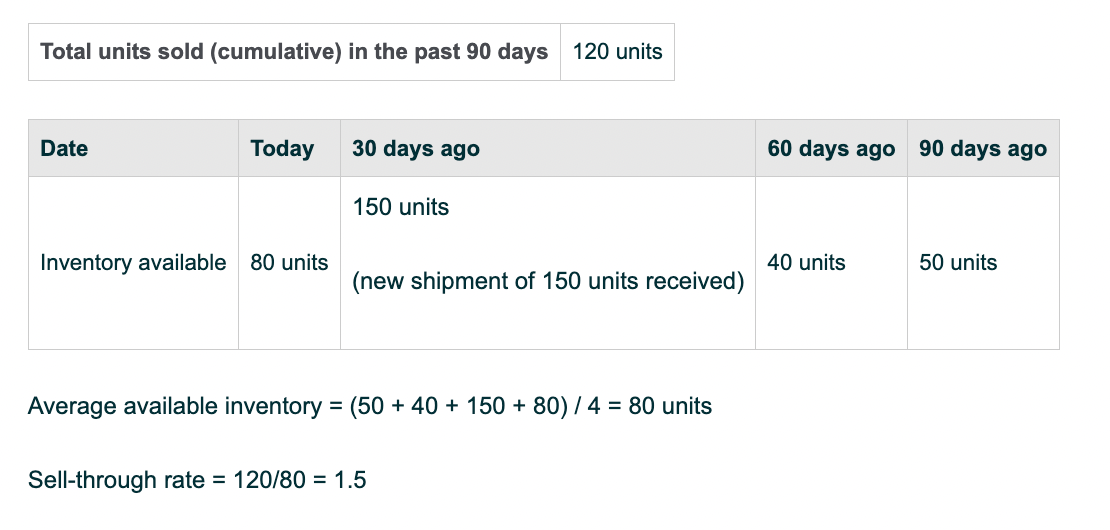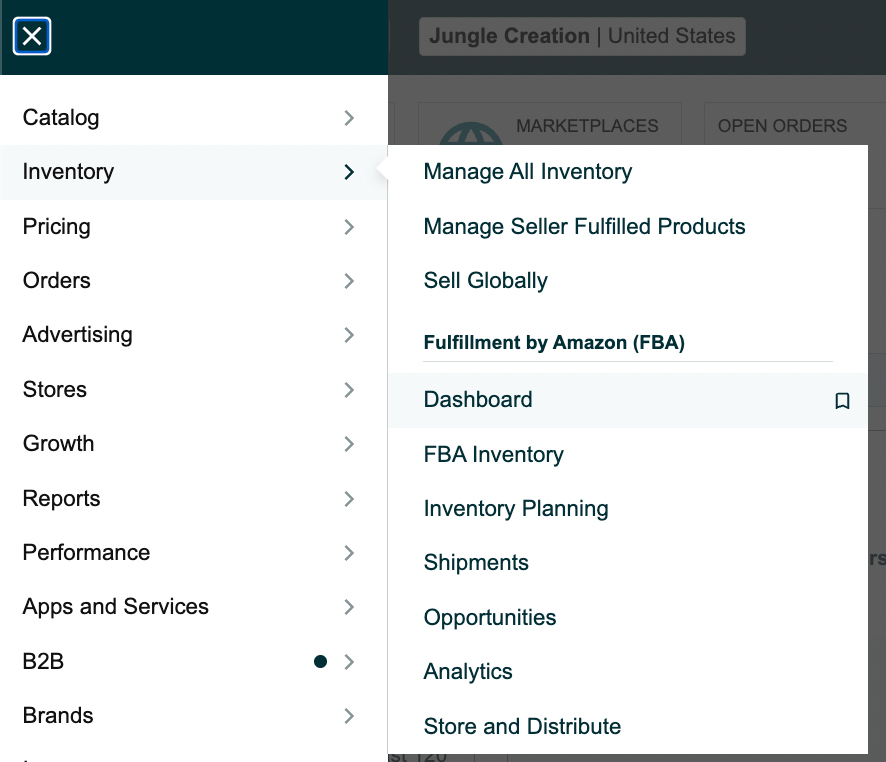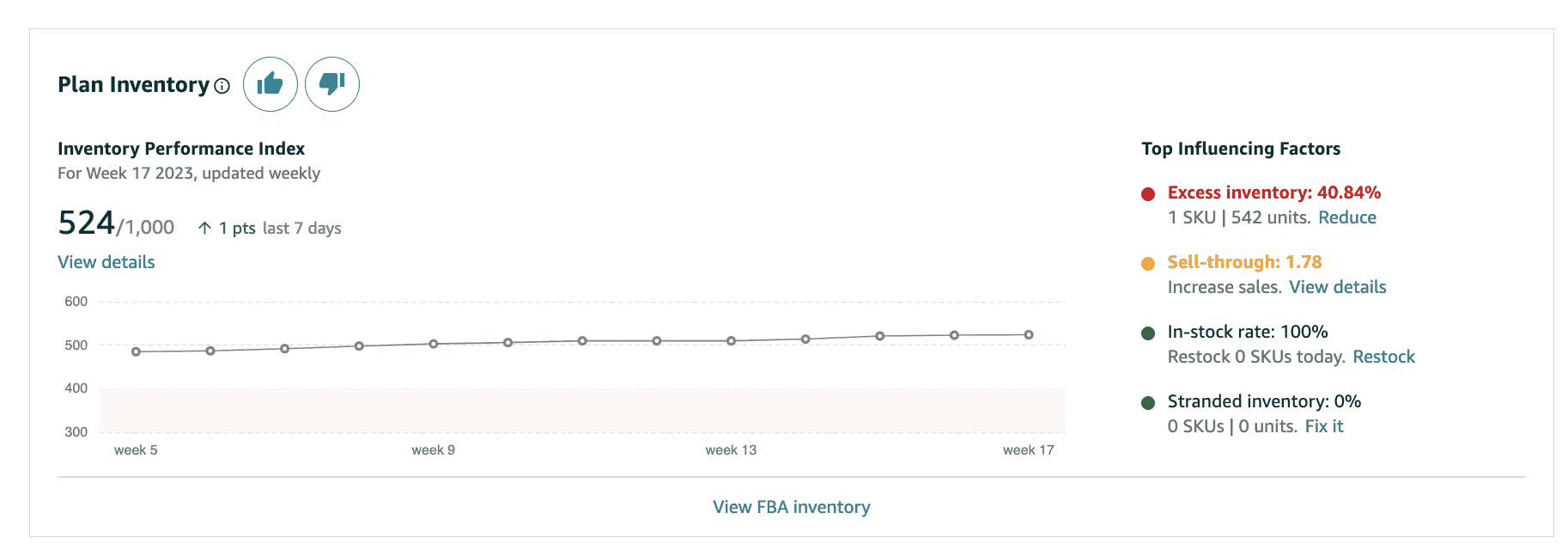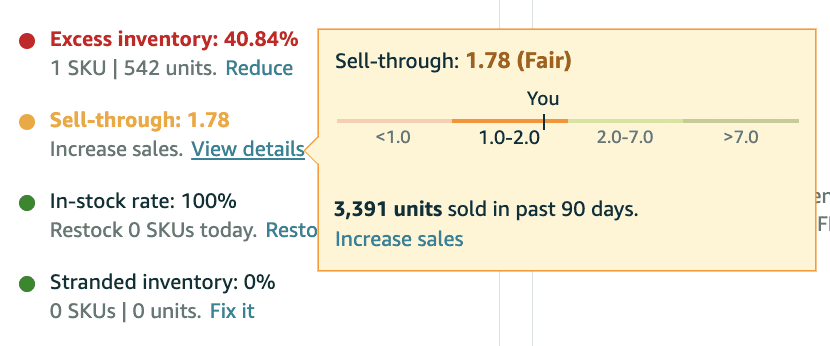This article was written by Jungle Scout ecommerce experts with some assistance from artificial intelligence.
As an Amazon seller, it’s important to keep track of your products’ sales performance to understand the overall health of your business. One of the most crucial metrics you need to understand and monitor is your sell-through rate (STR).
Understanding and tracking your sell-through rate gives you valuable insights into the effectiveness of your inventory management and sales performance.
In this article, we will explore what sell-through rate is, why it matters for Amazon and ecommerce sellers, how to calculate it accurately, and how to improve your sell-through rate.
- What is a sell-through rate?
- How to calculate sell-through rate
- How to improve your sell-through rate
What is a sell-through rate?
Sell-through rate is a measure of how quickly you are selling your inventory within a given period of time. It is expressed as a percentage and represents the ratio of units sold from your total inventory available for sale during a specific time frame, often monthly.
Your product’s sell-through rate helps you determine if you are overstocked, understocked, or optimizing your inventory levels. Understanding your STR can help you make informed decisions about inventory replenishment and pricing strategies.
READ MORE | Amazon Inventory Management 2023 Guide
Why is sell-through rate important for ecommerce sellers?
Sell-through rate is particularly important for Amazon FBA and ecommerce sellers for several reasons:
- Storage fees. FBA sellers pay storage fees for their products stored in Amazon’s warehouses. Knowing your sell-through rate helps you manage your inventory better, ensuring you don’t have excess stock that will incur additional storage fees.If you use a third-party fulfillment service for other ecommerce marketplaces, you could also incur monthly storage fees there.
- Marketing effectiveness. Your product’s sell-through rate is a good indicator of your marketing effectiveness. If your sell-through rate is low, it may indicate that your marketing message does not resonate with your target audience. By analyzing your sell-through rates with your marketing efforts, you can identify which marketing channels and messages are most effective and adjust your strategy accordingly.
- Product listing optimization. A low sell-through rate may indicate that your product listing needs improvement. By analyzing your product’s sell-through rate, you can identify any issues with your product listing, such as poor product descriptions, low-quality images, or incorrect pricing, and make changes to optimize your listing.
TIP: Need help optimizing your product listings? Check out Jungle Scout’s new AI Assist within the Listing Builder tool.
- Optimize your supply chain. You can optimize your product supply chain and sourcing strategies by analyzing your product’s sell-through rate. For example, if a particular product has a high sell-through rate, consider ordering more inventory to ensure you stay in stock.
- Profitability. Understanding your sell-through rate is crucial for calculating your profitability and managing cash flow. If your product has a high sell-through rate, you can invest more in that product or source similar products. On the other hand, if your product has a low sell-through rate, you may need to adjust your pricing, marketing, or inventory management strategies to improve your cash flow.
- Identify popular products. Sell-through rate can help you identify popular products and trends in your market. By monitoring your sell-through rates over time, you can specify which products are selling well and adjust your product mix accordingly. You can also use this information to identify new opportunities and expand your product line.
How to calculate sell-through rate
To calculate your sell-through rate, you will need two pieces of information: the total number of units sold and the total number of units available for sale during a specific time period.
The formula for sell-through rate is as follows:
Sell-through rate = (Total Units Sold / Total Units Available for Sale) x 100
Let’s break it down further with an example.
- Total Units Available. Say you have 100 units of a product listed on Amazon.
- Total Units Sold. During the month of March, let’s say you sold 60 units.
To calculate your sell-through rate for March, you would use the formula:
Sell-through rate = (60 / 100) x 100 = 60%
This means that 60% of your inventory was sold during March, and you have a sell-through rate of 60% for that period.
What is a good sell-through rate?
A good sell-through rate in ecommerce can vary depending on the industry, product category, and other factors such as price point and demand.
Generally speaking, a sell-through rate of around 50-80% is considered good on Amazon, eBay, Shopify and other ecommerce platforms. Though fluctuations are normal when considering seasonality, market trends, and competition.
However, it’s important to note that sell-through rate should be looked at in conjunction with other metrics such as conversion rate, traffic, and customer reviews to get a more complete picture of a product’s performance.
Additionally, it’s necessary to continually optimize your product listings, marketing strategies, and other aspects of your ecommerce operations to improve your sell-through rate over time.
READ MORE | How to Increase Your Amazon Conversion Rate in 2023
Amazon FBA sell-through rate
Amazon calculates and displays the sell-through rate in Seller Central a little differently. Amazon looks at the past 90 days of shipped units and the average inventory over that same period.
Here is an example provided by Amazon:
“Suppose you shipped 120 units in the past 90 days and had an average of 80 units available during that period. Your sell-through rate would be 120 divided by 80, which equals 1.5, as shown below.”

Amazon encourages sellers to maintain a sell-through rate in the green (or “good” rating) year-round. Let’s go over how to find your sell-through rate in Seller Central and what number constitutes “good.”
How to find your sell-through rate in Amazon Seller Central
If you fulfill orders through FBA, Amazon assigns each seller an inventory performance index (IPI) score which helps sellers gauge their inventory performance overtime.
One of the top influencing factors of your IPI score is sell-through rate. The faster your inventory sells compared to the amount of inventory stored, the higher your IPI score will be.
You can keep track of your overall sell-through rate that factors in all of your products, and each individual product’s STR. Use the sell-through rate to determine what is selling well and what needs some work.
To find your STR in Seller Central, go to the Inventory tab > Dashboard.

In your Inventory Dashboard, you can see your IPI score and your overall inventory performance.

For our account, our current STR is 1.78, which according to Amazon, is not that good and needs some work. Amazon considers a “good” STR to be between 2.0-7.0.
Also, notice how our excess inventory metric is in the red? This also plays a role in your sell-through rate as we have had some inventory stored for a while without selling.

If you click on “View details”, you’ll be taken to the FBA Inventory page where you can see the STR of each product you offer. This is where we can figure out which products are not selling so well to determine what the next steps are.
Improving your sell-through on Amazon is especially important because your inventory’s performance has a big impact on your FBA storage capacity limits. If your inventory performs poorly, Amazon may not allot you enough storage capacity in their fulfillment centers.
READ MORE | Amazon Just Updated Its FBA Storage Capacity System, and Here’s How it Affects You
Three of the products we offer have low STR’s, so in the next section, we’ll go over how to improve your sell-through rate.
How to improve your sell-through rate
Now that you understand what the sell-through rate is, and how to calculate it, let’s go over some ways you can improve your products’ sell-through rate.
- Optimize product listings. Your product listings should be optimized to make it easy for customers to find and understand what your product is all about. Use high-quality images, clear and concise product titles, and detailed product descriptions that highlight the benefits and features of your product.
- Use Amazon PPC Advertising. Amazon Advertising is a great way to drive targeted traffic to your product listings. With the use of Sponsored Products, Sponsored Brands, and/or Sponsored Display ads, you can increase sales and improve your sell-through rates. Of course, you want to be sure your listing is optimized before driving traffic.
- Monitor pricing. Keep an eye on your pricing and make sure you’re competitive. If you’re priced too high, customers may be less likely to purchase your product. If you’re priced too low, you may be leaving money on the table. Use Jungle Scout’s Product Tracker tool to monitor your competition and adjust your pricing accordingly.
- Encourage customer reviews. Customer reviews are a powerful tool on Amazon, as they can influence buying decisions. Encourage customers to leave reviews by using Jungle Scout’s Review Automation tool to send automated Amazon ToS-approved review requests to your customers.
- Utilize Amazon promotions. Amazon offers a variety of promotions, including Lightning Deals, Coupons, and Subscribe & Save, which can help increase your product’s visibility and sales. Experiment with different promotions to see which ones work best for your product.
- Manage inventory effectively. Poor inventory management can lead to out-of-stock situations, which can negatively impact your sell-through rate. By tracking inventory levels and sales data, you can ensure that you have enough inventory on hand to meet demand without overstocking. Additionally, identifying slow-moving or non-performing inventory can help you make informed decisions about pricing and promotions.
What is your sell-through rate?
Sell-through rate and all these other metrics can be a bit confusing, so we hope this article has any questions you may have had! If you have more questions about sell-through rate (or anything else), please let us know in the comments.

 No Comments
No Comments